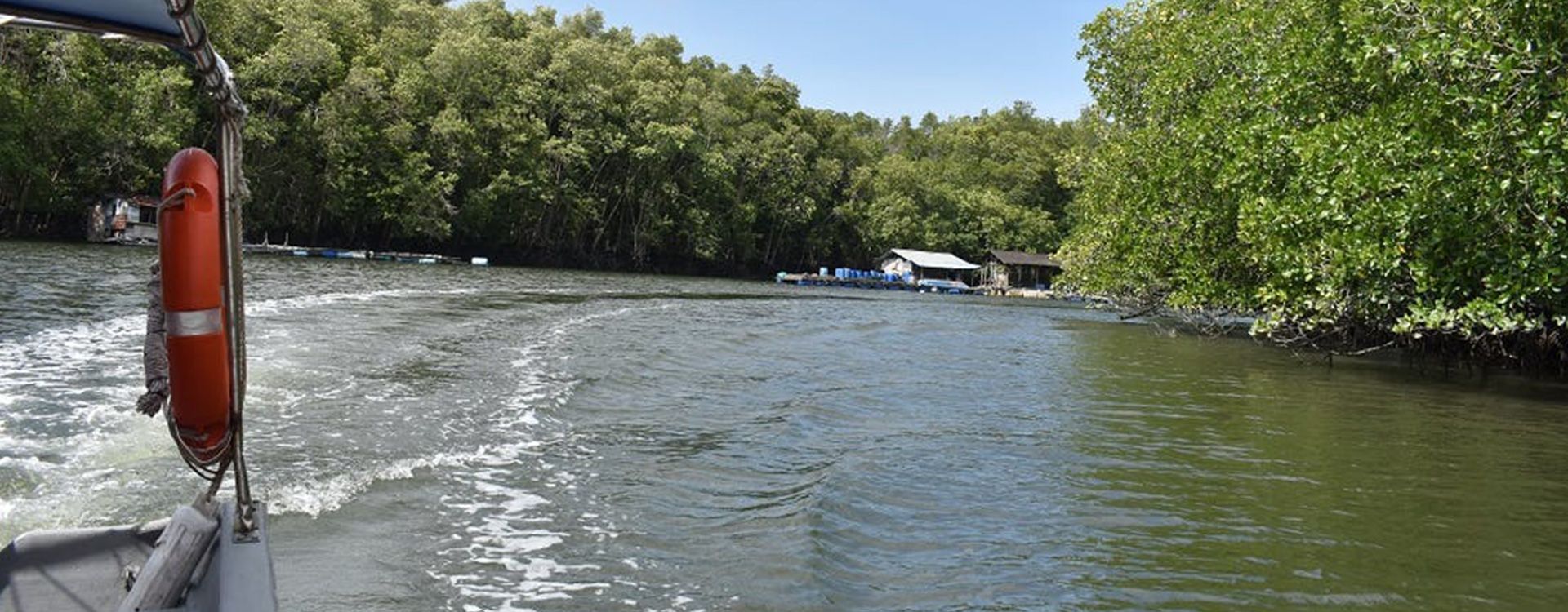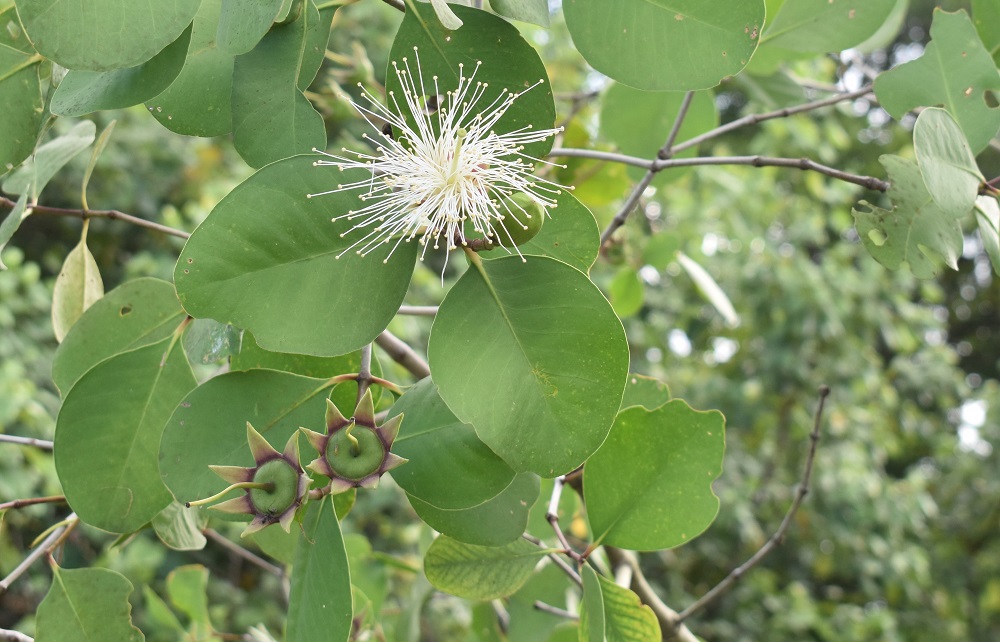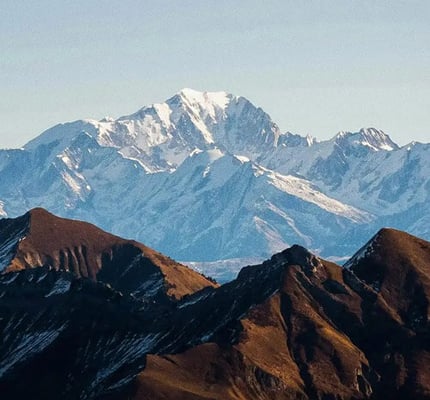Lightfoot Travel
WhatsApp Business Account

“I hope that when people spend time in nature, they will want to protect it,” said Along Ayeb, a 22-year-old naturalist and tour guide.
Leaving the shoreline behind, the boat manoeuvred forward along the shoreline, but somehow back in time. Within the Belungkor Mangroves the fishing families lived as they had done for centuries: dining on shrimps and horseshoe crabs plucked out of the water and using the bark and fruits of the trees to cure any ill. This was a quiet life, a slow life and one that made our hurried 21st-century way of living look out of sync.
Signs of the locals fishing traps could be seen long before we saw the pastel-coloured floating homes. Looking more like Burning Man artworks than fishing nets, sculptural traps stretched out from the shoreline into the sea to catch the fish as soon as the tide turned.
Further out into the Straits, fishermen bobbed around in their wooden sampans, hauling in their catch. As we drew closer to one fisherman, who wedged a small cigarette in his gap-toothed smile, he proudly held his catch aloft and I could see pink prawns leaping and wriggling in his basket.

The fishermen, who would spend the day in their boats and the night in their floating homes, would only go ashore to sell their catch to the 200 villagers living on the mangrove-fringed islands in the reserve. We pulled ashore at the end of a Wes Anderson-style pier, which led to Kampung Lingting, where small groups of pastel-coloured villas took shade under the banana trees and women shyly busied themselves in their outdoor ktichens while their children played at their feet.
The islanders were new to the idea of tourism, but with a sand quarry carving its way through the forest, they wanted to look at other ways of making a living. But they were determined that these ways would celebrate and protect their heritage. They were now doing that with the help of our guide, Along.
With her hijab tightly wrapped underneath her khaki wide-brimmed hat, the young naturalist looked at home in the mangroves of Desaru. But it was just 18 months ago that the wide-eyed conservationist from Langkawi first set eyes on Belungkor. Now she is introducing visitors to the land that she fell in love with.
Born into a family of naturalists, Along is the Bindi Irwin of Malaysia. Her snake charmer father, who is in the Guinness Book of Records, presented her with a Burmese python on her first birthday.
Her home was filled with animals that her parents had rescued and were preparing to return to the wild. From macaques to pythons, and even a stray dog that young Along snook into the family home after seeing it was injured.
When she attended a nature course in Johor, a boat company owner asked her to join them and help introduce eco tours in area. Along knew that to be successful she needed to understand the local’s way of life, so she chose to live as they did and moved to live among the fishing families on the island. Along joined the locals to forage within the deep mud of the mangroves for snails, and helped them prepare for the arrival of tourists. With the help of a language book that her father lent her, she is teaching the Malay speaking families how to speak English. “We work through modules in the book and they will read passages of the book aloud to me to practise their English,” she explained.
One of the new eco projects that Along had helped launch and wanted to share with us was a small tree nursery found within the mangroves. Sisters Maknak and Makjang, asked Along to help them establish a business that would not only protect their island, but create an experience for visitors. Dressed in chiffon headscarves and Wellington boots, the jovial gardeners invited me to follow them along a muddy path that took us further into the mangroves. As I turned a corner, a leafy secret garden decorated with hammocks came into view. A babbling inlet cut its way through the tiny nursery and either side of the waterway mangrove tree samplings stood to attention in small groups according to their height.

Maknak explained that they gathered seeds from the shoreline and brought them to their nursery to plant. If the mangrove seeds fail to land vertically in the mud, they will be swept away by the briny water. But these Malaysian sisters gave them a second chance to survive by planting them in their nursery. When the plants were 16 months old, they will replant them in the forest.
Before I sipped sea holly tea under a mangrove arbour, the sisters invited me to make a stake for the future and plant my own mangrove seed. Offering me one of the long bean-like seeds, I copied their technique and filled a small bag with the rich mangrove mud beneath my feet. The sisters told me to shake the bag so that the pockets of air were released and gave the mud the chance to hug the seed even tighter.
Along said that visitors to Malaysia like to get close to nature, but not every tourist attraction helps the wildlife: “When people visit Langkawi and feed the eagles, they are stopping them from hunting the snakes. They are destroying the eco systems of the wildlife.”
Along was determined that the projects that they launch in Desaru aid, rather than destroy nature. While visitors might recognise that the mangroves help protect the shoreline, to the locals they are known to offer so much more.
After we climbed back into the boat and ventured further into the avenues of mangroves, Along told us why the trees were held in such esteem by the locals. Along named one avenue within the mangroves the Pharmacy of the Wetlands, as the bark, seeds and pulp of the trees was used by the sea gypsies to create charcoal tablets for dysentery and antiseptic creams for cuts.
I thought about my mangrove seed stood to attention alongside the others, the small spike that sprouted out from the top gave me hope that one day someone else will be able to sip sea holly tea under the shade of my towering mangrove tree.
Mangrove seed planting is just one of the experiences that you can discover when you stay at AnantaraDesaru Coast Resort.
San Jose & the Central ValleyCosta Rica
San Jose & the Central ValleyNicoya PeninsulaCosta Rica
Snorkel amongst vibrant cichlid fish in Lake Malawi
Experience life on a tea and coffee estate in Thyolo
Witness rare wildlife in their natural habitat at Liwonde
Engage with local Malawian communities
Relax on the tropical island paradise of Mumbo Island
